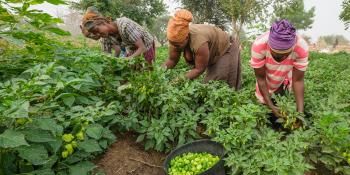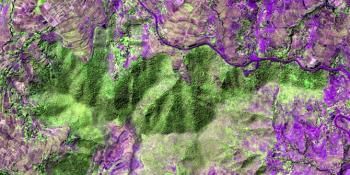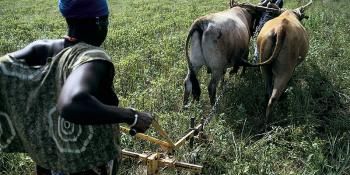East Africa moves towards implementation plans with the Climate Analogues tool
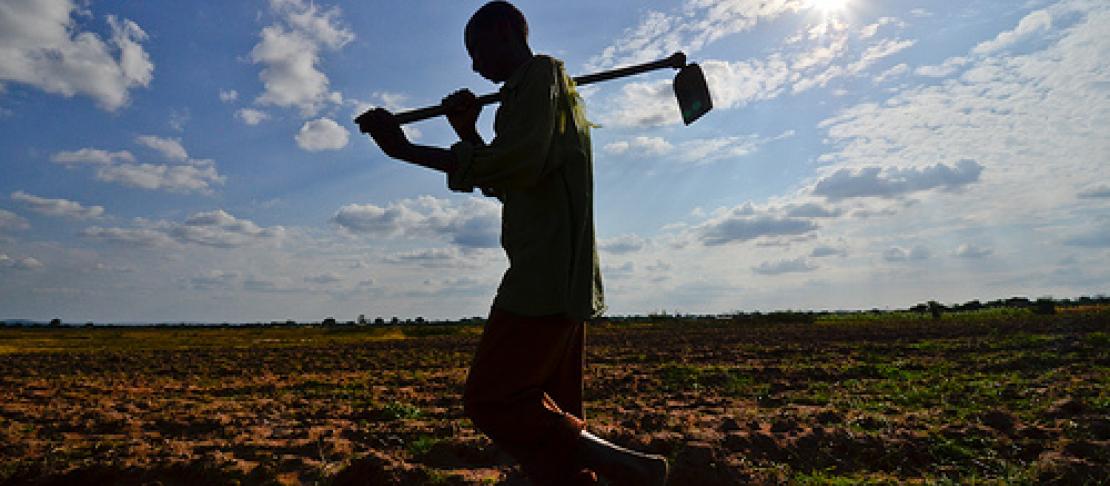
by Olive Thiong'o, Tom Ouna and Maren Radeny
A majority of East African populations are actively involved in agriculture and over 80% of them are made up of smallholder farmers relying exclusively on rain-fed crops. Continued changes in climatic conditions and projected increases in extreme weather events such as drought, heat stress, or higher than normal rainfall amounts are a threat to these farmers’ livelihoods and well-being. Chronic poverty means they lack the adaptive capacity to counter such events, resulting in a cycle of food insecurity and livelihood loss. Addressing data needs and knowledge gaps in climate information is critical for confronting the adverse effects of climate change on agriculture. A tool that gives farmers and researchers a “glimpse” of future climates would allow them to design better strategies for adaptation to such changes.
Such a tool, known as the Climate Analogues tool, has been developed by CCAFS to identify where the future climate of a place in the world can be found in the present day. This tool has the power to compare climates and identify similar climatic conditions across space and/or time. Because 70% of expected future climates are said to already exist currently somewhere in the world, identifying climate analogues helps to ground abstract climate projections in concrete reality. CCAFS is now sharing the Analogues tool with researchers and other stakeholders and training them in its use for climate change adaptation strategy planning.
Following two previous regional training sessions in Nepal and Senegal developed by CCAFS, a third training session has led researchers and practitioners from East Africa to acknowledge the importance and benefit of using the tool in their work. The “Using climate scenarios and Analogues for Designing Adaptation Strategies in East Africa” training session was held at ILRI campus in Nairobi from the 7th to 10th of August, 2012. Led by Dr. Ousmane Ndiaye (Meteorological Service, Senegal) and Flora Mer (CIAT, Colombia), the training session aimed to build regional capacity on the use of climate scenarios and analogues for designing adaptation options, and to provide an overview of climate modeling techniques and tools. Specialists from the hard and social sciences - both private and public sector - from Ethiopia, Kenya, Tanzania and Uganda attended the workshop.
Using the tool, both farmers and researchers are not only able to see what their probable future climates will be like, but also learn from what farmers are doing in sites that already experience such climates, supporting the development of adaptation strategies. According to Winfred Mbungu of Sokoine University in Tanzania, an attendee of the training, “the Analogues tool allows us to live the future now.” To him, it is encouraging to learn that most future climates already exist somewhere in the globe. The ability of the tool to calculate analogue sites currently experiencing the future climate of a given reference site makes it important in the development of adaptation strategies. It makes it possible for people, especially farmers, to learn what practices and strategies others are employing to adapt and which they might be able to employ in the future.
In praise of the training sessions, Pauline Birungi of the Bulindi Zonal Agricultural Research and Development Institute in Uganda said, “Climate change has often been a monster! But with the understanding of what is happening or has happened elsewhere, I now view climate change as a challenge we can tackle together, as researchers and farmers.” To her, the tool initially seemed to be too complex – a sophisticated program characterized by statistical, climatic and mathematical figures – for her to be able to comprehend with ease. However, she soon found it to be user friendly and applicable for a range of practitioners, from farmers and scientists to policy makers alike. She left the training saying, “The availability of the resources, online information and personnel to assist with the use of the tool beyond the training, makes it favorable for adoption. In addition, it will help key decision-makers in designing the research agenda and subsequent appropriate adaptation strategies, based on what are the likely projected scenarios.”
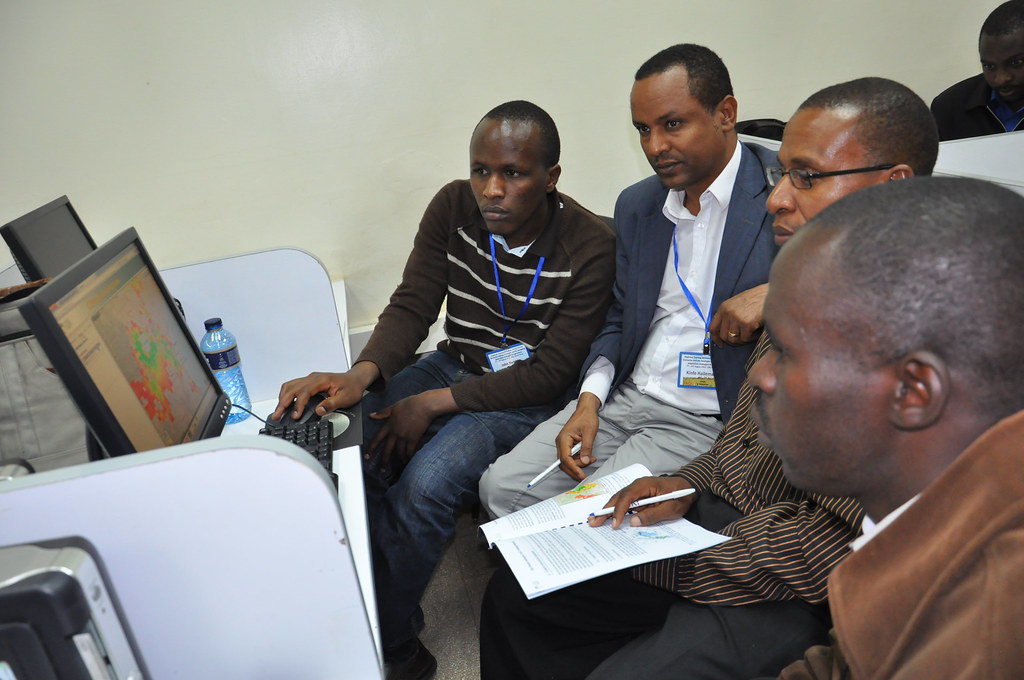
A case study of farmer-to-farmer exchange visits among climatic analogue locations illustrated the use of the tool in the Southern highlands of Tanzania. The study was used as an example of one of the ways to encourage farmers to start adopting strategies to cope with their future climatic constraints. Widespread praise of the exchange visit and farmer-to-farmer peer learning was evident amongst the training participants. Commenting on this particular visit, Fred Atieno of Bioversity in Kenya said, “An exemplary thing was the work done with local farmers and their own individual accounts/contributions in trying to adapt to the changing climate. Farmers are responsive to these learning techniques.”
Looking at what the tool would most likely to be used for on return to their daily occurrences, Andualem Shimeles of the Ethiopian Institute of Agricultural Research said, “Climate change-related work in my team is mostly focused on generating climate change projections and applying crop models to assess the impact of climate change on agriculture. This tool will now enable us to complement our modeled impacts by identifying analogue sites to undertake on-the-ground empirical testing and formulate appropriate adaptation strategies.” In addition, he mentioned that the tool could become a good collaboration point, inviting partners in Ethiopia to learn about its use so as to share similar data and ensure efficient use of available strengths/resources within organizations carrying out climate change work.
Participants recommended that CCAFS East Africa should popularize the use of the Analogues tool to many more climate practitioners in the region, in both the public and private sectors. Participants saw much potential for CCAFS to continue using the tool in other sites to conduct more participatory action research. This work will enable partners and farmers visualize the concept of climate change and design suitable adaptation strategies. To improve the tool, many participants suggested increasing its robustness with the inclusion of other parameters that contribute to sustainable agriculture, such as soil characteristics or pest/disease distributions.
As a way forward after the training, each country selected a focal point and proposed a roadmap with timed deliverables in which they plan to share the tool and to implement it in their national climate change adaptation activities. Stakeholders agreed that coming climate change need not be a mystery; appropriate use of available tools and models can help them take steps today to prepare for their most likely future.
Watch this presentation from the workshop to see the plans East African countries made for incorporating the Climate Analogues tool into their national climate change adaptation strategies:
Visit the Climate Analogues website for more information, and read past blog posts on the climate analogues project.
Olive Thiong'o is a Communications and Outreach Specialist for CCAFS East Africa regional office. Tom Ouna is a GIS consultant for the International Livestock Research Institute (ILRI) in Nairobi. Maren Radeny is the CCAFS Regional Science Officer for East Africa. To get more updates on our work on the analogues sites, like us on Facebook, and follow us on Twitter @Cgiarclimate.
